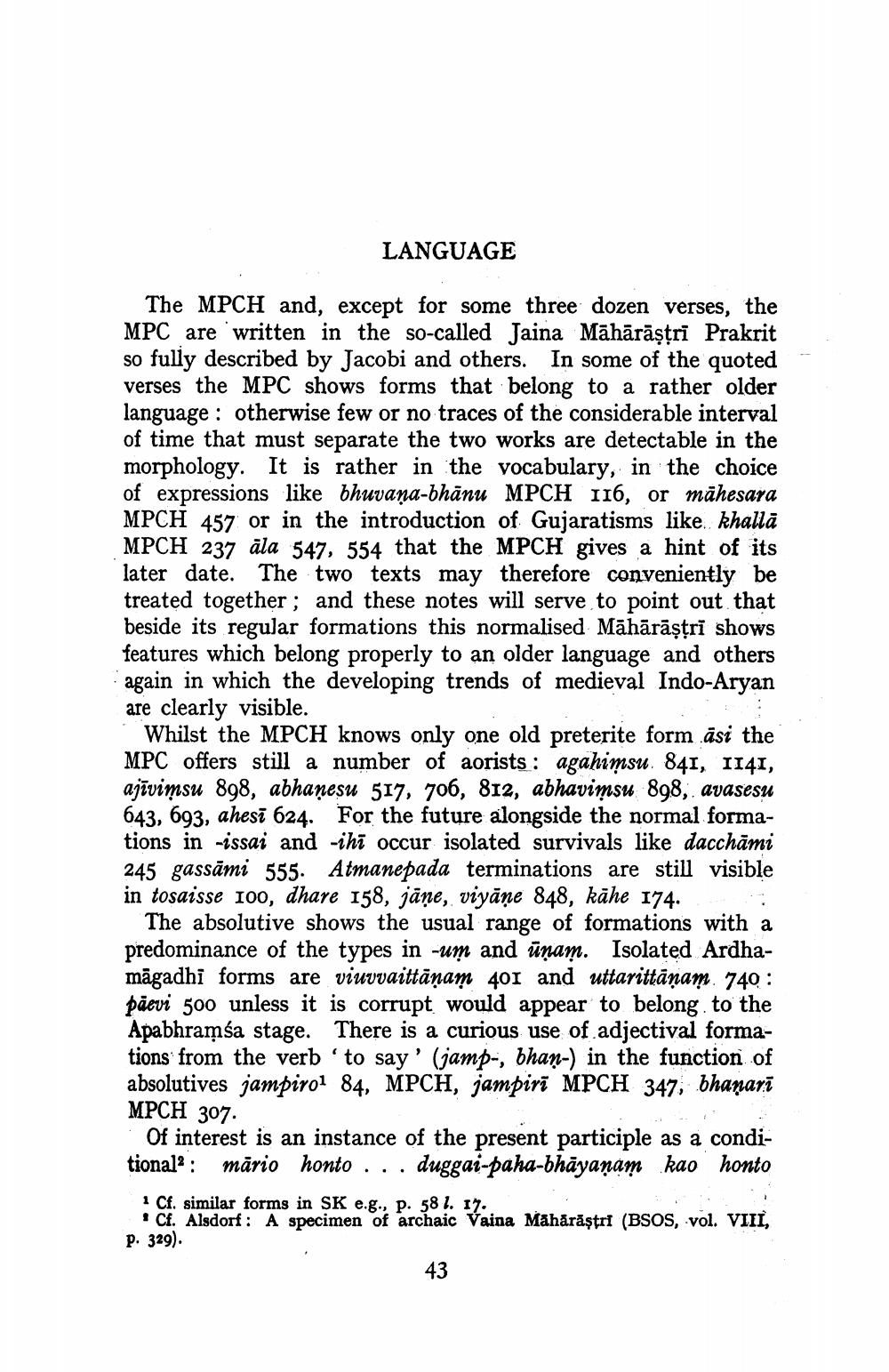________________
LANGUAGE
The MPCH and, except for some three dozen verses, the MPC are written in the so-called Jaina Māhārāṣṭrī Prakrit so fully described by Jacobi and others. In some of the quoted verses the MPC shows forms that belong to a rather older language otherwise few or no traces of the considerable interval of time that must separate the two works are detectable in the morphology. It is rather in the vocabulary, in the choice of expressions like bhuvana-bhānu MPCH 116, or mahesara MPCH 457 or in the introduction of Gujaratisms like khallā MPCH 237 ăla 547, 554 that the MPCH gives a hint of its later date. The two texts may therefore conveniently be treated together; and these notes will serve to point out that beside its regular formations this normalised Māhārāṣṭrī shows features which belong properly to an older language and others again in which the developing trends of medieval Indo-Aryan are clearly visible.
Whilst the MPCH knows only one old preterite form asi the MPC offers still a number of aorists: agahimsu. 841, 1141, ajivimsu 898, abhaṇesu 517, 706, 812, abhavimsu 898, avasesu 643, 693, ahesi 624. For the future alongside the normal formations in -issai and -ihi occur isolated survivals like dacchāmi 245 gassami 555. Atmanepada terminations are still visible in tosaisse 100, dhare 158, jäne, viyane 848, kähe 174.
The absolutive shows the usual range of formations with a predominance of the types in -um and uṇam. Isolated Ardhamāgadhi forms are viuvvaittaṇam 401 and uttarittänam 740: päevi 500 unless it is corrupt would appear to belong to the Apabhramsa stage. There is a curious use of adjectival formations from the verb 'to say' (jamp-, bhan-) in the function of absolutives jampiro1 84, MPCH, jampiri MPCH 347, bhaṇarī MPCH 307.
Of interest is an instance of the present participle as a conditional2: mario honto... duggai-paha-bhāyaṇam kao honto
1 Cf. similar forms in SK e.g., p. 58 l. 17.
Cf. Alsdorf: A specimen of archaic Vaina Mahārāştri (BSOS, vol. VIII, p. 329).
43




